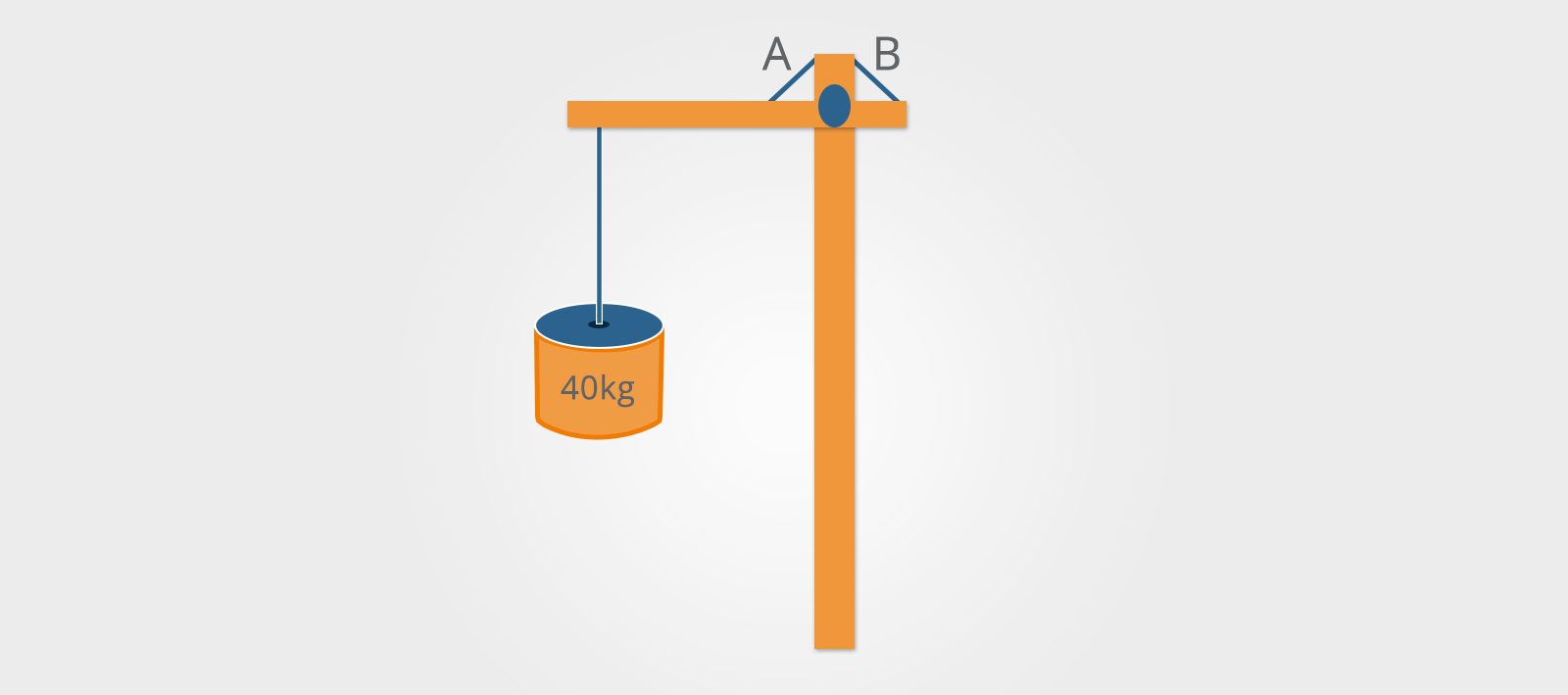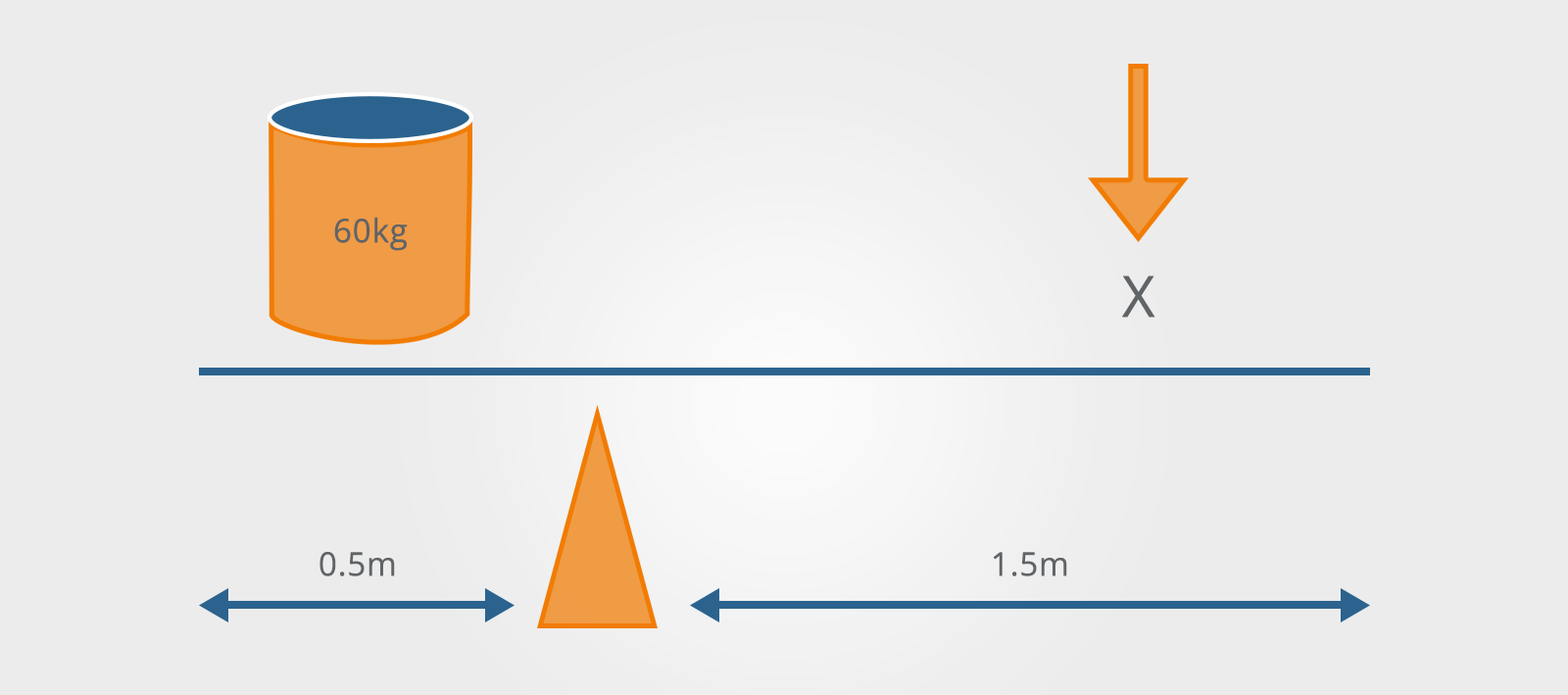Bennett Mechanical Comprehension Test (2026 Guide)
Updated November 5, 2024
- What Is the Bennett Mechanical Comprehension Test?
- What Does the Bennett Mechanical Comprehension Test Measure?
- What Is The Bennett Mechanical Comprehension Test Used For?
empty
empty
empty
- What Roles Is Bennett Mechanical Comprehension Test Used to Assess?
- What Is the Format of the Bennett Mechanical Comprehension Test?
- Is the Bennett Mechanical Comprehension Test Difficult?
- Sample Questions and Answers for Bennett Mechanical Comprehension Test
empty
empty
empty
empty
- How to Pass the Bennett Mechanical Comprehension Test in 2026
- Other Types of Tests That You Might Have to Take in an Interview
empty
empty
empty
- Frequently Asked Questions
- Conclusion
What Is the Bennett Mechanical Comprehension Test?
The Bennett Mechanical Comprehension Test (BMCT) is an online test that assesses mechanical aptitude.
The test, developed by Pearson Assessments in 1940, is widely used throughout the US by companies needing to assess an individual’s mechanical reasoning ability.
A new and improved version was produced in 2014 to be more in line with the current needs of employers; this is called the BMCT-II (the original is the BMCT-I).
Candidates cannot know what specific questions will be on the test and so cannot prepare rote answers. Therefore, companies use this test to effectively identify those who have a natural aptitude for mechanical processes and reasoning, as well as excellent spatial perception.
The test can be useful in filtering out those without sufficient comprehension for a certain role or training course.
This particular test is the most popular of its kind in America and is frequently used by major companies like Delta Airlines, DuPont, Coca-Cola and Nestlé as part of their recruitment processes.
Unlike some other psychometric tests, this is not a test that you can expect to score well in without significant preparation.
The BMCT assesses your mechanical reasoning ability, specifically on topics like levers, pulleys, springs and gears – so candidates must be confident in all of the different areas of the test in order to be successful.
What Does the Bennett Mechanical Comprehension Test Measure?
The BMCT measures an individual’s capabilities in the four key areas needed to be successful in a highly manual or technical job role:
- Mechanical reasoning
- Spatial perception (being able to visualize shapes in 3D)
- Knowledge of the basics of mechanics and physics (scientific laws/principles for each)
- Understanding how machinery works
What Is The Bennett Mechanical Comprehension Test Used For?
The BMCT is an effective way of finding out how capable an individual is of doing a certain role and whether their comprehension of the topic is such that they could effectively learn more.
This test is frequently used in the following processes:
Recruitment
During recruitment, it is often necessary to establish a person’s mechanical reasoning capabilities.
The test is frequently sat by candidates applying for technical roles – predominantly engineering and machinery trades found in such industries as aerospace or automotive.
Qualifications, experience and certifications demonstrate the candidate’s understanding of the subject and ability to carry out the manual work; however, they do not tell the employer of the individual’s problem-solving ability and understanding of mechanical and physical concepts.
This is what the BMCT is for.
The test is a quick and effective way for an employer to establish if the individual has the mental reasoning ability to be able to do the job.
Practice Bennett Test with JobTestPrep
Training
The test is also used by organizations that want to gain a better insight into whether an individual would truly benefit from a training course – or whether the person does not have the mechanical reasoning abilities needed to be able to train to a higher level.
Risk Assessment
The BMCT can also be a useful way of assessing and reducing risk in a business.
Gaining a better understanding of the workforce’s ability to reason when using heavy machinery or repairing equipment could save the business money (through reducing equipment damage and enabling more efficient work) and reduce workplace injury (through fewer accidents).
What Roles Is Bennett Mechanical Comprehension Test Used to Assess?
The BMCT is used across a range of different industries as, despite the varying expertise of the different sectors, requirements for skilled workers with a natural aptitude for mechanical reasoning remain the same.
Some of the roles that use the BMCT for assessment are:
- Mechanical, electrical, aerospace and civil engineers
- Machine operatives
- Maintenance technicians (installation, industrial, air conditioning)
- General industrial roles (caretaker, maintenance manager, general workers)
- Skilled trades (welder, carpenter, metallurgist, electro-mechanic)
- Technical agricultural roles (including agri-food and other commercial fields)
- Vocational students (those in mechanical engineering, construction, automotive mechanics, mining or transport)
- Mechanics (bikes, cars, aviation, industrial)
What Is the Format of the Bennett Mechanical Comprehension Test?
The BMCT-II is usually completed online (supervised or unsupervised) and is available in American English, French, Spanish and Dutch.
The test is normally completed remotely; however, there are also test centers where candidates can attend in person to complete it. Paper copies of the test are also available.
The candidate is given two untimed practice questions so they can learn the process of answering. Once they feel confident, they move on to 55 multiple-choice questions that need to be completed within 25 minutes.
The 55 questions are chosen from a bank of over 300, meaning no two tests will be the same among those taking them at the same time.
There are a total of 12 topics featuring up to seven questions each. The largest number of questions come under the pulleys and levers section (seven questions).
Other topics include:
- Hydraulics (six questions)
- Forces, centrifugal force and inertia (six questions),
- Inclined planes (six questions)
- Gears and belt drives (five questions)
- Gravity and speed (four questions)
- Acoustics and optics (three questions)
- Objects’ gravitational center (three questions)
- Electricity (three questions)
- Heat (three questions)
- Forms and volumes (three questions)
Then there is an ‘other’ sectionfeaturing a further six questions.
Each question features at least one image, a question and usually three answer choices.
Your employer dictates how many times you can retake the test.
Is the Bennett Mechanical Comprehension Test Difficult?
The questions in the BMCT vary in difficulty, from simple to very difficult. Every candidate will get an equal spread of difficulty to ensure the test is fair.
Given that no two questions in the same category can be exactly the same difficulty level, the BMCT results do not contain details regarding correct answers.
A sophisticated scoring system uses algorithms to calculate a competence (or ‘theta’) score.
The profile report also includes a percentage score, worked out from the competence score.
Different professions have different passing scores; a mechanic working in aviation, for example, may need to achieve a higher percentage to pass than a car mechanic.
If you walk into the test room having done no preparation, this test will most certainly be difficult – perhaps impossible. If you have put in the hours of preparation and completed many practice papers, you might even enjoy the test.
Bennett Mechanical Practice Test
Sample Questions and Answers for Bennett Mechanical Comprehension Test
Here are some examples of the types of questions you may come across in the BMCT, and how to approach your answers.
Mechanical Comprehension

One rope needs to be removed from the crane; which one (if any) can safely be removed so that the weight is still supported?
A 40 kg weight is suspended from a rope at the end of a horizontal bar. The horizontal bar is attached 3/4s along to a vertical bar. Two ropes, labeled A and B, link the top of the vertical bar to the top of the horizontal bar.
A) Rope A
B) Rope B
C) Neither rope can be removed
If you need to prepare for a number of different employment tests and want to outsmart the competition, choose a Premium Membership from JobTestPrep.
You will get access to three PrepPacks of your choice, from a database that covers all the major test providers and employers and tailored profession packs.

Which image is a 2D version of this cube construction?

Two holes have been made in a container full of water. Which of the two holes will propel water the furthest?
A rectangular container of water. There are two holes in its right side, one above the other.
A) The top hole
B) The bottom hole
C) They will both propel water to the same point

How much weight in kg should be positioned at point X so that the scales are balanced?
A bar is balanced on a triangle fulcrum. There is 60 kg on the left side of the bar. Point X is on the right side. The fulcrum is 0.5 m from the left and 1.5 m from the right.
A) 30 kg
B) 60 kg
C) 20 kg
How to Pass the Bennett Mechanical Comprehension Test in 2026
As with all psychometric assessments, no amount of revision will help you to know the specific answers to questions that come up in the BMCT; each one is different and must be worked out on the day. They have been specifically designed to assess how proficient your brain is at reasoning.
However, there are some questions styles that are used frequently and the process for answering them can be memorized.
It is crucial that you put in hours of preparation for this test; you can train yourself to be able to answer all the different types of questions and familiarize yourself with the style of the paper.
Step 1. Take Practice Tests
Complete as many practice tests and online tutorials as you can, both to practice the style of question the BMCT asks and to improve your mechanical reasoning skills. Here are a few websites to look at:
-
Psychometric Success. Psychometric Success offers practice tests and questions covering many different topics. There are free versions and more complex paid versions. You can start with the article on mechanical reasoning tests to get an overall view on them, then download a practice test.
-
Jobtestprep.com. Job Test Prep provides practice materials, study guides and test simulations to help you get to grips with the style of question and time constraints you will be faced with on the day of your test. The site also features YouTube videos providing detailed explanations of how to approach questions and techniques for breaking down the problem to get to the answer.
Step 2. Take Timed Tests
Once you are used to the style of questions you need to answer, start practicing your timing; 25 minutes to answer 55 questions works out at around 45 seconds per question.
Step 3. Check the Details of How the Test Will Be Given
Make sure you know what to expect and how/where you will be taking the test; such as whether it will be remote or not.
Step 4. Don't Waste Time
Get used to recognizing the point at which you should make an educated guess and move on.
Step 5. Revise the Laws of Physics
For example, a question asks you to choose from marks A, B or C on a graph as the point at which the skydiver stops ‘falling’ and starts to maintain a constant speed.
You should not be thinking about the wind direction, the weather or the type of parachute; your first thought should be the physical principle – the science of falling.
You should be saying to yourself, “At terminal velocity, an object maintains a steady speed because the force on it is zero”.
Step 6. Visualise the Scenario in Your Mind
It can often help to stretch the detail of the question to a ridiculous degree.
For example, if a question asks you which out of the two sticks pictured gives the tightrope walker better balance, and the sticks are of a similar size, imagine the tightrope walker with a tiny, pencil-sized stick and a huge pole vault sized stick.
By going to extremes you may get a clearer idea of what the answer is.
Step 7. Don’t Neglect the Other Parts of the Recruitment Process
Remember, while the BMCT is a very important part of the recruitment process for technical roles, but it is not the only part.
You need to also put the work into preparing for your interview as well.
Read the job description thoroughly and research the job role to ensure you know as much as possible before going into the interview.
Bennett Mechanical Practice Test
Other Types of Tests That You Might Have to Take in an Interview
Mechanical reasoning is just one of a long list of psychometric tests. You may be given other reasoning tests as part of your interview or to see if you are ready for further training.
Below are some of the other areas you may be tested on during your interview or assessment:
Personality
Personality tests are similar to other reasoning tests in that you cannot revise for them. However, unlike other reasoning tests, you cannot fail them.
The tests assess your character traits – whether you are trustworthy, dependable, friendly and more.
There is often no ‘correct’ answer to the question; the answers you give will help the employer build a profile of the type of personality you have. They can then decide whether it is well suited to the role you are applying for.
Aptitude and Reasoning
Aptitude and reasoning tests measure an individual’s mental ability and logical reasoning. As well as mechanical reasoning, covered here by the BMCT, there are also
These tests are an efficient way for an employer to filter out those who are technically qualified for a particular role but will not perform to the level needed. They may have the correct qualifications but perhaps lack the reasoning ability needed to meet the employer’s expectations for the role.
Situational Judgment
Situational judgment tests are similar to personality tests in that there is no ‘correct’ answer.
They help employers assess an individual’s soft skills by presenting the candidate with a hypothetical workplace situation and asking what they would do from a set of options.
The decision a candidate makes gives the employer a much better idea of the person's decision-making, problem-solving and people skills, and how they would mesh with the current team.
Frequently Asked Questions
The Bennett test is a type of aptitude test. Many employers and educational organizations use it to test aptitude for solving mechanical problems. It is particularly useful for people considering a career in engineering, plumbing or carpentry. You could be asked to take the Bennett test as a job applicant, employee or prospective student.
After you have completed the Bennett test, the employer or educational organization commissioning the test will receive your results.
Your results are presented as a score report, which includes a competence (theta) score and a percentage score. Your percentage score is worked out using your competence score.
A good score on the Bennett test is different depending on the profession you want to work in. Some job roles require a higher Bennett test score than others.
Percentile rankings are used to compare test results as part of a norm group. If your percentile ranking score is over 40, this is considered to be in the ‘good’ score range for many job roles.
Candidates are allowed 25 minutes to complete the Bennett mechanical comprehension test. The Bennett test is 55 questions long. The questions are grouped into 12 different categories.
To prepare for the Bennett mechanical test, it is important to improve your mechanical aptitude and abilities. If you are a visual learner, you may find online instructional videos helpful. These will help you to learn specific mechanical concepts and skills.
If your budget allows, you might choose to employ a dedicated mentor with appropriate experience or complete a bespoke online course in mechanical concepts. If you are looking for a comprehensive Bennett test study guide, JobTestPrep offers tailored mechanical aptitude practice materials.
Conclusion
The first time you see a BMCT practice paper you may feel overwhelmed; the question style and time limit can be daunting to those who have never taken a reasoning test before.
With practice comes experience, and once you have seen the same style of question over and over again, you will feel much more confident with your approach to answering it.
Despite being unable to revise answers to specific questions for this type of test, there is revision you can do. You should learn as many tips and approaches as you can – memorize them so that when you are faced with a question, you can draw on the different techniques you have learned and try to get to an answer.
The BMCT is testing your abilities in a way that is largely out of your control, but by putting in the work beforehand you can significantly improve on the first score you got on a practice paper.






